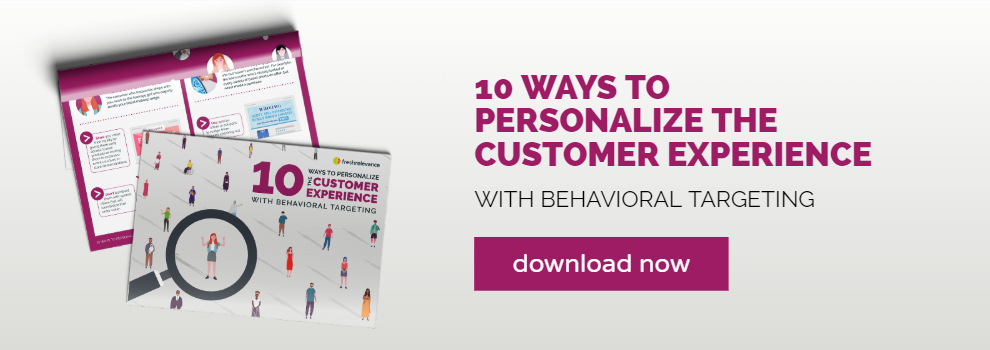Almost everyone is familiar with the film Pretty Woman. What people may be less aware of, however, is the valuable lesson it has for marketers.
In one of the most memorable scenes, Julia Roberts’ character Vivian goes shopping on Beverly Hills’ Rodeo Drive, armed with successful businessman Edward Lewis’ credit card. On entering one of the luxury stores, however, she’s quickly shot down by the judgemental saleswoman, who makes a snap assumption that she can’t afford to shop there.
For marketers, the error is clear – a poor understanding of the individual and subsequent failure to provide a relevant and positive experience caused the loss of the sale to a competitor. Had the saleswoman greeting Vivian been armed with the knowledge of her spending power, the outcome could have been quite different. We all know how the film ends, and had Vivian been treated in a better way by the shop from the start, it’s likely she would have continued to revisit, repurchase and become a loyal customer. (Although it wouldn’t have made for such good cinema.)
The film may be thirty years old, but the marketing lesson still rings true today. Knowing a customer is critical to providing an experience that resonates with them, meets expectations and ultimately helps secure a purchase. Technology has moved on since the Pretty Woman days – creating more touchpoints and data to help inform this insight, but with this has come more distractions, rapidly shifting preferences and greater competition. Getting the experience right and quickly – whether in store or online – has never been so important.
First and foremost, brands need to get on top of customer data. By collecting, combining and analysing data and making informed decisions based on the insights, brands can anticipate what their customer wants and present them with products that are relevant and align with their tastes and price point.
However, recent research by Gartner shows that many businesses are falling short of their personalization ambitions. For 27% of marketers, data is the key obstacle.
With that in mind, here are three ways to get on top of your customer data and provide an experience that is tailored to each shopper.
1. Cater to the shopper’s price affinity
Imagine if the saleswoman in Pretty Woman could have predicted the amount Vivian was going to spend. With AI-powered price affinity predictions, this is becoming a reality. Leveraging personalization platforms that can predict the shopper’s price point, businesses can provide an even more relevant and targeted experience to new website visitors from the moment they arrive.
Even though the retailer may have products available in the shopper’s desired price level, they struggle to identify and present those items as the shopper hasn’t expressed their interests yet. This can lead to high bounce rates from new visitors who deem the products unattainable or irrelevant. This challenge can be solved by using AI to look at the individual’s contextual data, such as traffic source, device, time of day and location.
Comparing this information with similar people who have gone on to make purchases allows retailers to anticipate what a new visitor’s price affinity will be, and present them with products that sit well with their price range. This is likely to align more closely with what they are looking for and encourage them to engage more with the brand.
By going one step further and implementing personalization tactics across channels, brands will be able to provide a consistent and contextual experience based on key customer personas, no matter how a customer is interacting.
2. Capture data the smart way
Capturing the visitor’s email address is critical for marketers. One way businesses can get customers to share their email address is through displaying a data capture pop-up or banner on the website.
Shoppers landing on the site are encouraged to enter their email address, and in some instances gender, date of birth and interests, such as their favourite item of clothing or brands. This serves to help build a picture of their preferences, allowing brands to continue to engage with them once they’ve left the website.
By leveraging this data to send highly relevant and targeted emails, marketers are in a much stronger position to take consumers from consideration to conversion.
Learn more:
Pop-up best practices and examples
How Feel Good Contacts gained 10,000 new subscribers in one month using targeted popovers.
3. Personalize your follow up
Joining the dots together and combining real-time behavioral, transactional and contextual data ensures every aspect of a brand’s marketing is as relevant as possible. Combining this data means companies can immediately serve customers with the most relevant content the moment they land on the webpage.
This works particularly well for shoppers that browse a site but don’t purchase anything. For example, if a shopper lands on a website for a new coat but leaves the online store without making a purchase, an automatic follow-up email is triggered after they leave the site. Sharing a timely browse recovery message that is personalized based on the viewed brands and suggests similar items is likely to encourage them to reconsider the purchase and bring them back to the website.
Learn more:
10 amazing abandoned cart and browse emails (and what you can learn from them)
The Complete Guide to Ecommerce Personalization
The saleswoman in Pretty Woman may have lost a sale because she didn’t understand her customer, but that doesn’t mean brands of today need to. By capturing and leveraging data, companies can better anticipate what their customers want and provide a more relevant and targeted experience. It’s the brands that leverage this data that will be the best positioned to stand out from the crowd and win loyal customers.
This post originally appeared on Netimperative.






